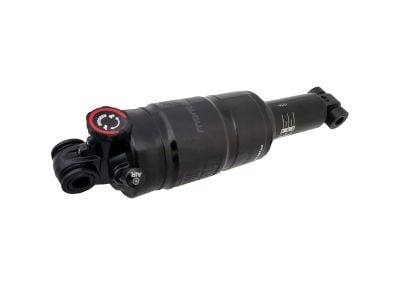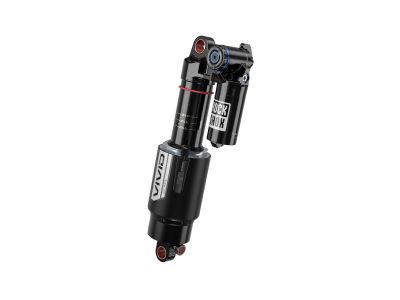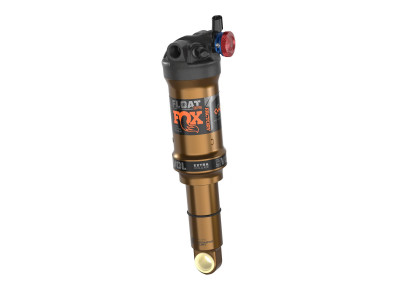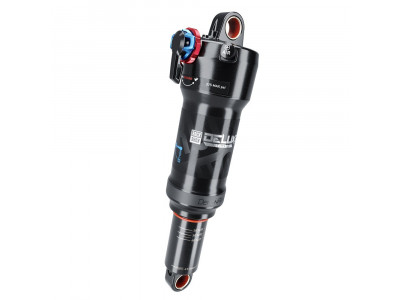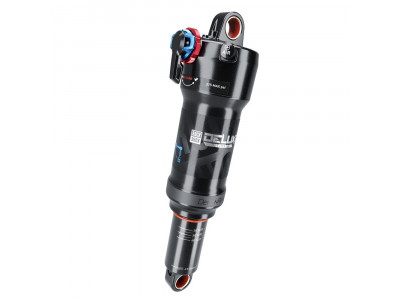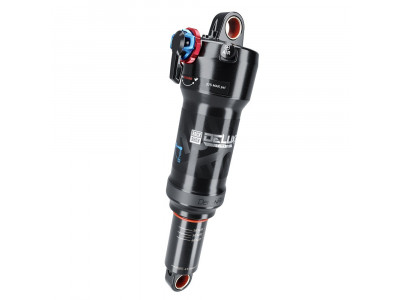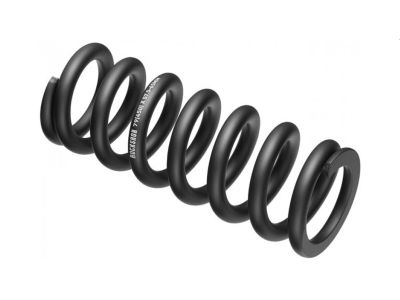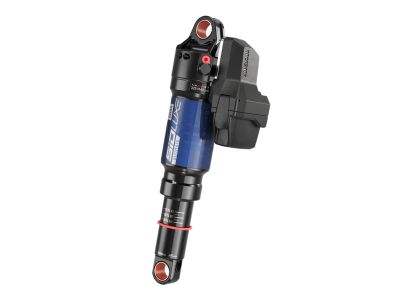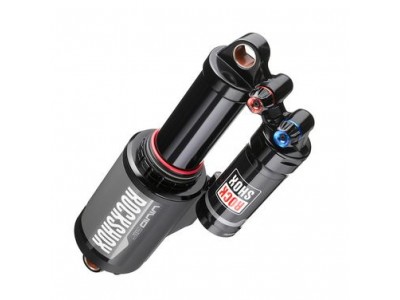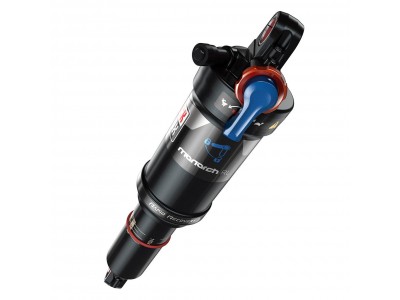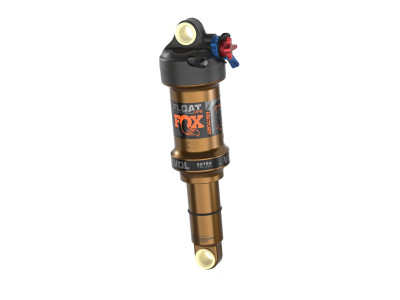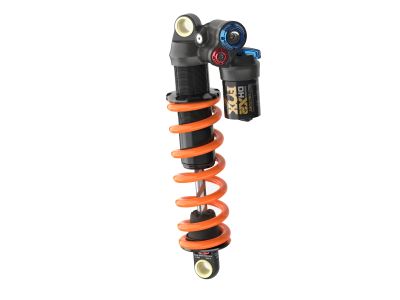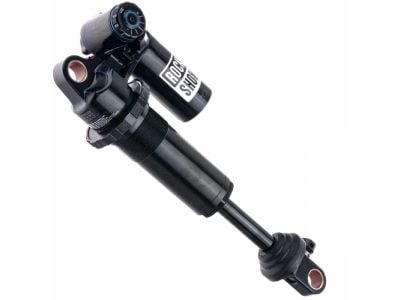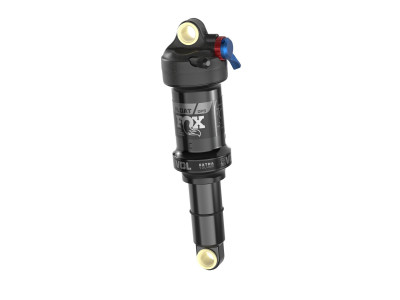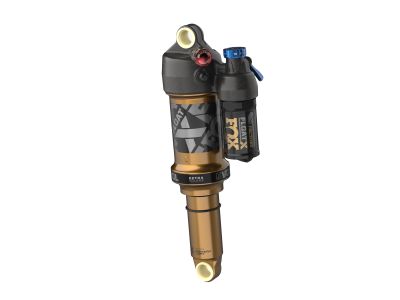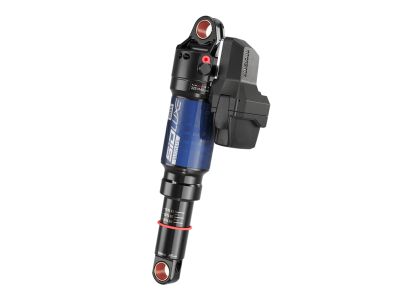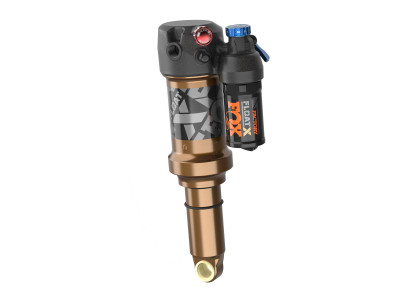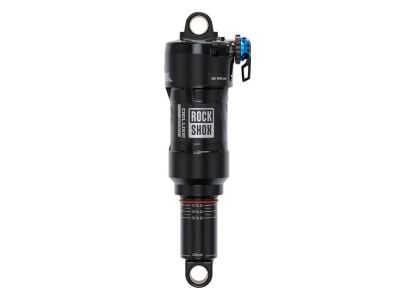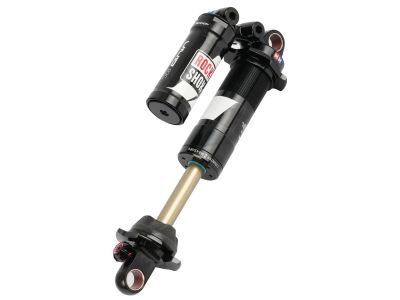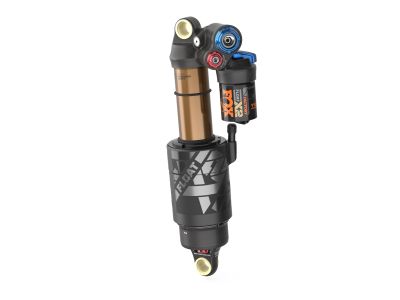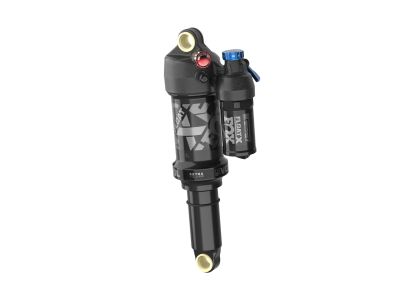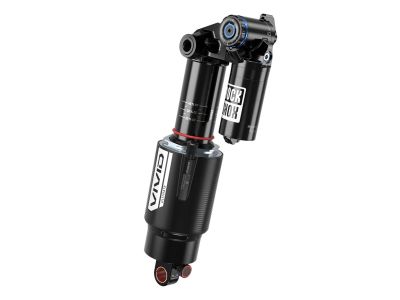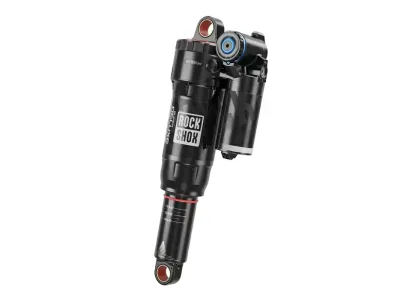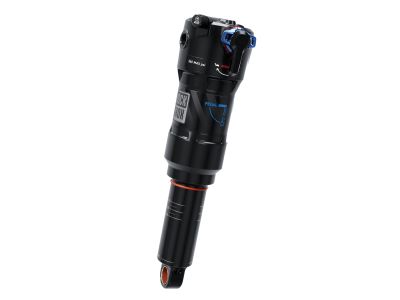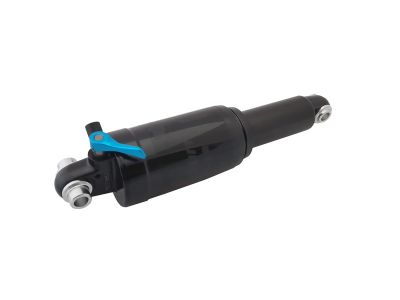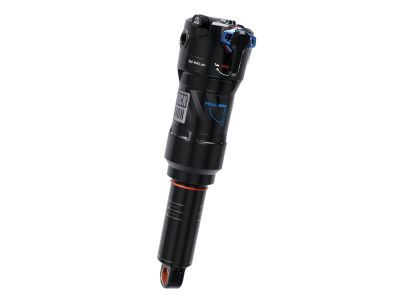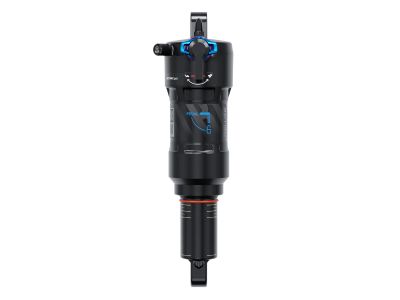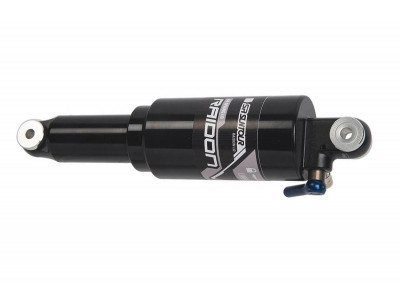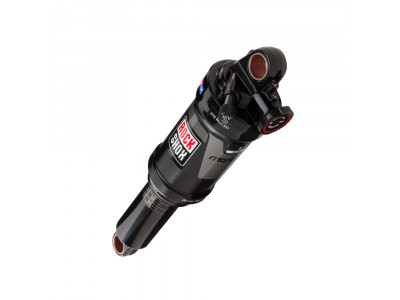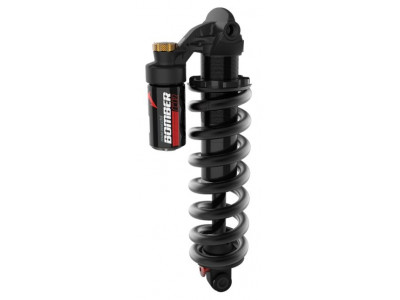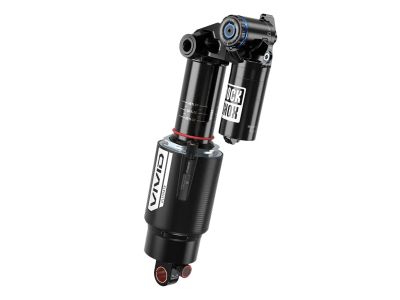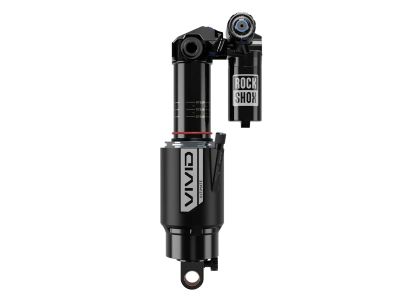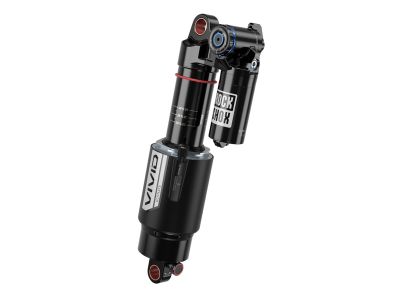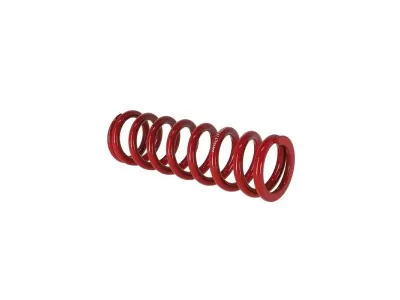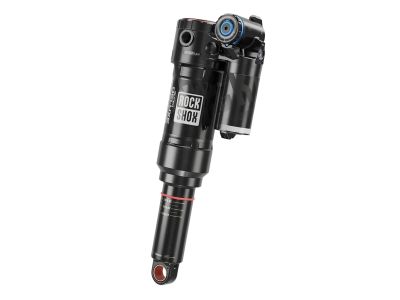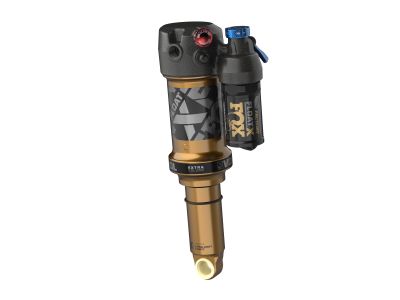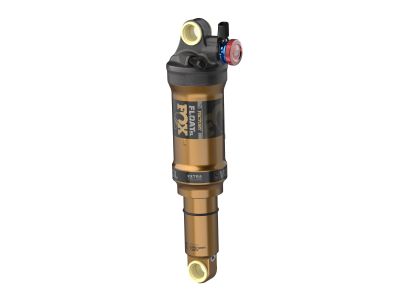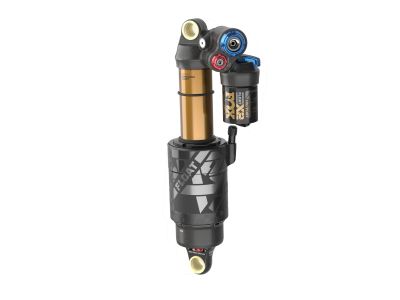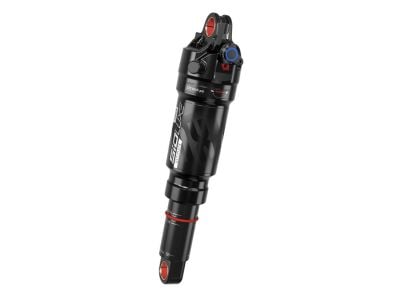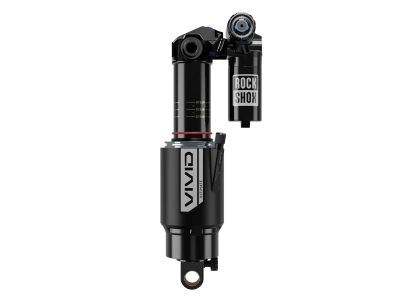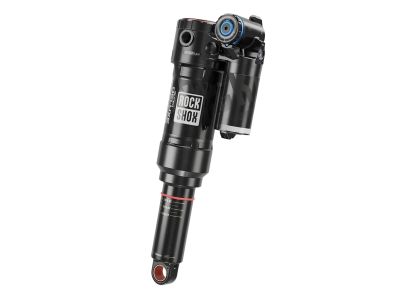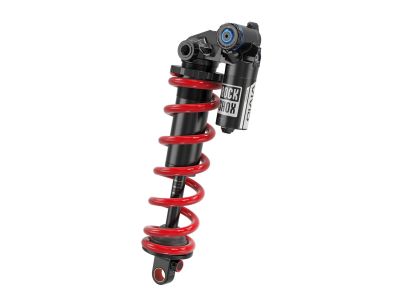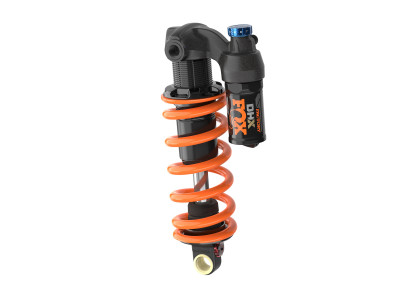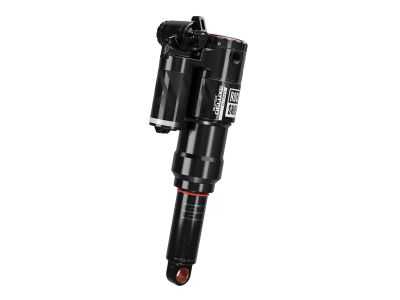A bicycle rear shock is a component typically found on mountain bikes or other off-road bikes. It is located between the rear structure of the bicycle and the bicycle frame. It is responsible for dampening shocks and vibrations that arise when driving in difficult terrain. The rear shock is designed to provide a smoother and more controlled ride by allowing the rear wheel to move independently of the rest of the bike. When choosing a shock absorber, do not forget to consider the following parameters:
- Shock absorber stroke: The rear shock absorbers have a certain stroke, it is a parameter that tells about the maximum compression of the shock absorber. Travel values can range from short (e.g. 100 mm) to long (e.g. 200 mm or more) depending on the type of bike, its construction and geometry.
- Adjustability: Many shocks offer different settings that allow the suspension to be fine-tuned to the rider's preferences and riding style. These settings can include rebound damping, compression damping and air pressure adjustments.
- Mounting: Shock absorbers are supplied with various mounting options, for example with an eye or pin attachment, or mounting the rocker arm directly on the shock absorber body. These systems must be compatible with the design of the bicycle frame.
- Suspension type: Rear shocks can use a variety of spring types, including coil springs, air springs, or a combination of these. Each type of spring offers different characteristics in terms of response, adjustability, and weight.
- Lockout: Some shocks feature a lockout mechanism that allows the rider to temporarily turn off the suspension, making the bike more efficient on climbs or smooth sections.
- Weight: The weight of rear shocks can vary depending on the design, materials used and features offered. Lighter shock absorbers can contribute to the overall weight reduction of the bike and better handling.
It is important to note that the specific technical specifications and features of rear shock absorbers may vary between makes and models. Therefore, it is recommended to read the manufacturer's instructions when choosing or adjusting a rear shock.
How to adjust rear shock settings for optimal performance?
If you want to adjust the rear shock settings for optimal performance, follow these general instructions:
- Set sag: The amount of suspension travel that is used when the rider is in the normal riding position. Helps maintain traction and control. Start by setting the sag to the recommended percentage based on your rear shock specs. It is usually in the range of 20-30% of the total stroke. Adjust air pressure or preload (for spring shocks) to achieve desired sag.
- Rebound: Controls how quickly the damper expands back to its original position after compression. Adjusting the rebound damping allows you to fine-tune the rear wheel's response to bumps. Start with the rebound damping setting in the middle of the range and find the optimal setting with small adjustments.
- Compression: Restricts the flow of oil through the compression circuit, making the suspension stiffer during compression. If your rear shock has adjustable compression damping, start by setting it in the middle of the range. Experiment with different settings to find the right damping hardness depending on the terrain you ride.
- Fine-tuning: Pay attention to how the rear suspension behaves and works. Make small adjustments to the settings to optimize performance based on your preferences and specific track conditions.
How and how often to service the silencer?
Here is a short general guide and recommendations on how to service the muffler:
- Regularly check the rear shock absorber for damage, leaks, and wear.
- Follow the manufacturer's recommendations regarding service intervals.
- If you drive in difficult or muddy conditions, consider more frequent maintenance.
- The rear shock absorber needs to be cleaned and lubricated regularly.
- For complex operations, such as replacing seals or servicing internal parts, seek professional service.
- Pay attention to any performance degradation and address it immediately.
Proper maintenance guarantees long life, performance, and safety. By following these steps, you can keep your rear shock in good condition and enjoy a smoother ride.
